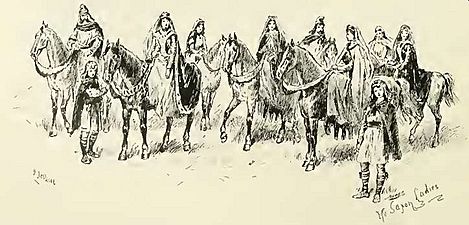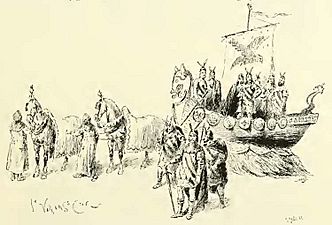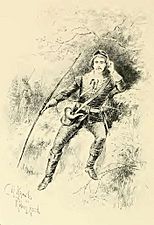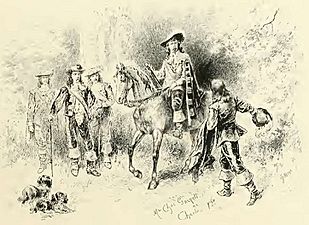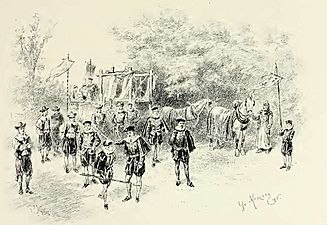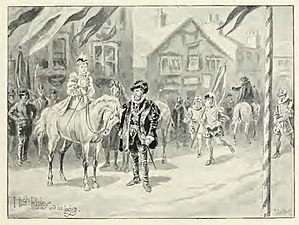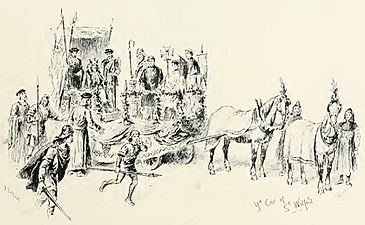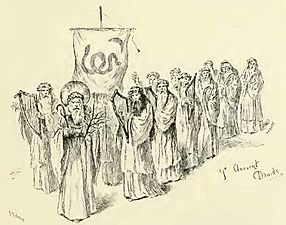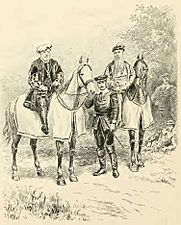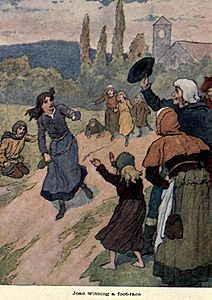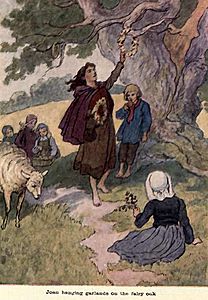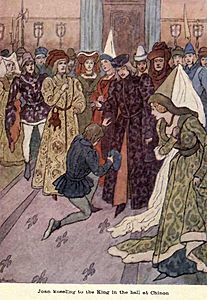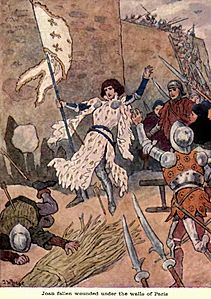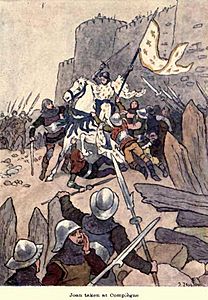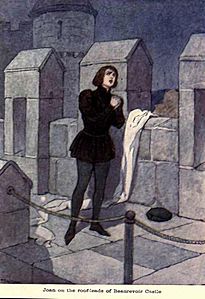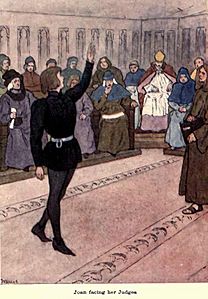John Jellicoe (illustrator) facts for kids
Quick facts for kids
John Timothy Jellicoe
|
|
|---|---|
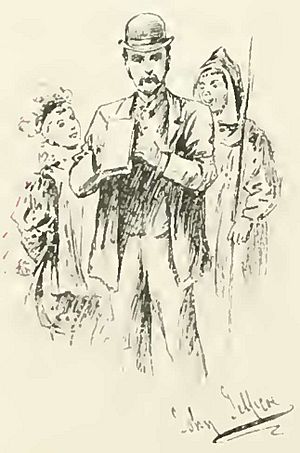
John Jellicoe at the Ripon millenary festival - probably a self-portrait
|
|
| Born | 5 January 1842 |
| Died | June 1914 (aged 72) Willesden, London, England
|
| Nationality | English |
| Occupation | Illustrator |
| Years active | 1869 – 1912 |
| Known for | Illustrating sporting and dramatic events |
|
Notable work
|
The Record of the Ripon Millenary |
John Timothy Jellicoe (born 5 January 1842, died 13 June 1914) was a talented British artist. He was famous for drawing pictures for newspapers, magazines, and many books. He helped bring stories to life with his amazing illustrations.
Contents
John Jellicoe's Early Life
John Jellicoe was born in London, England, on 5 January 1842. His father, George Daniel Jellicoe, worked as a solicitor's clerk. John was the second child of his parents. He also had older half-siblings from his father's first marriage.
Family Life and Homes
John Jellicoe married Georgina Annie Wiltshire in 1868. They had one son, George Edward Jellicoe, who later became a publisher. Sadly, Georgina passed away in 1872.
Three years later, John married Charlotte Anne Holland. They had two more children, Mabel and Gordon. The family moved several times within London. John's job title changed from "artist in wood" to "artist (figures)," which meant he focused more on drawing people.
John Jellicoe's Art and Works
John Jellicoe studied art in London and started showing his work in 1865. He displayed his drawings, paintings, and watercolours at important art places like the Society of British Artists and the Royal Academy of Arts. John was known as an excellent artist, especially for drawing people. He often worked with other illustrators, adding figures to their pictures of buildings and places.
Pictures for Magazines and Newspapers
John Jellicoe drew many pictures for popular magazines and newspapers. He worked for the Illustrated Sporting and Dramatic News, which covered sports and theatre. He also drew for the Illustrated London News, St. Paul's Magazine, and The Windsor Magazine. He even illustrated for boys' papers like Union Jack and The Boy's Own Paper.
Ripon Millenary Festival Illustrations
In 1886, John Jellicoe went to the Ripon Millenary Festival in Ripon, North Yorkshire. This festival was a big celebration of history, showing off old traditions and costumes. John drew many pictures of the event, capturing the fun and excitement of the festival.
Pictures for Books
John Jellicoe illustrated books and stories for many different authors. Some of the famous writers he worked with include:
- Charlotte Brontë, a well-known novelist.
- Robert Browning, a famous poet.
- Charles Dickens, a very popular novelist.
- Oliver Goldsmith, an Irish poet and playwright.
- G. A. Henty, who wrote many adventure stories for boys, often set in history.
- Andrew Lang, a Scottish author interested in folk and fairy tales.
- Bessie Marchant, who wrote adventure stories with young female heroes.
- Mrs. Henry Wood, an English novelist whose books were read all over the world.
- Alfred, Lord Tennyson, a famous poet during Queen Victoria's time.
Example of Book Illustrations: Joan of Arc
Most of John Jellicoe's illustrations were black and white drawings. However, he also created some beautiful colour pictures. For example, he illustrated The Story of Joan of Arc (1906), a children's book written by Andrew Lang. John created eight colour illustrations for this book. One of these, showing Joan of Arc wounded in battle, was even used as the book's cover!
Death
John Jellicoe's wife, Charlotte, passed away in late 1913. John followed her in June 1914. He was buried in the same plot as Charlotte in Hampstead Cemetery.
Note that some links may refer to Admiral John Rushwood Jellicoe, who was a different person.



